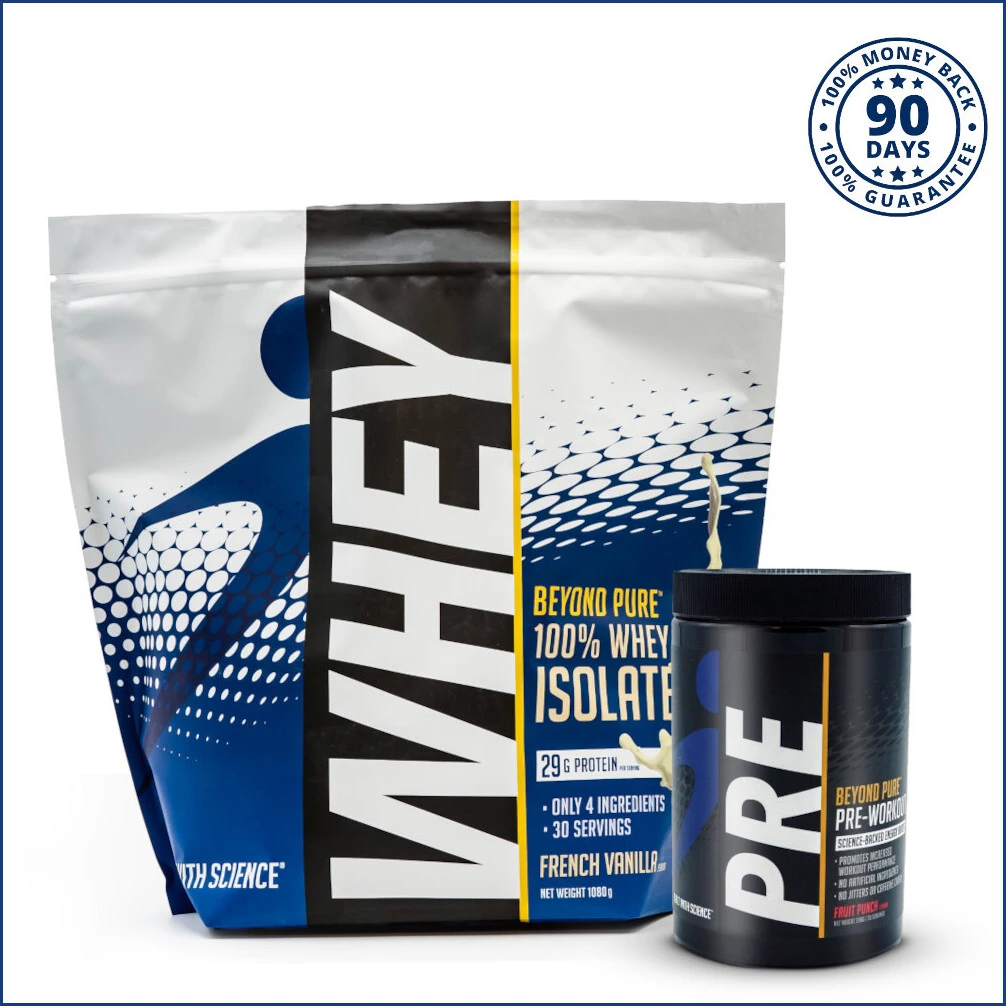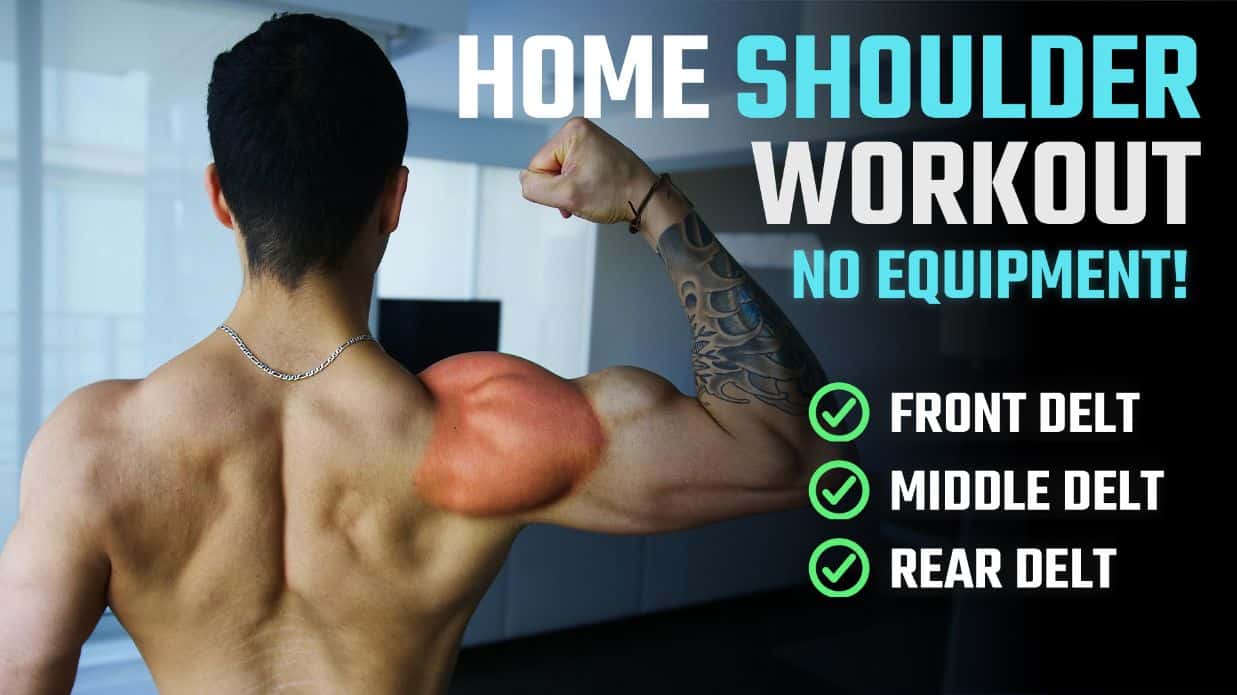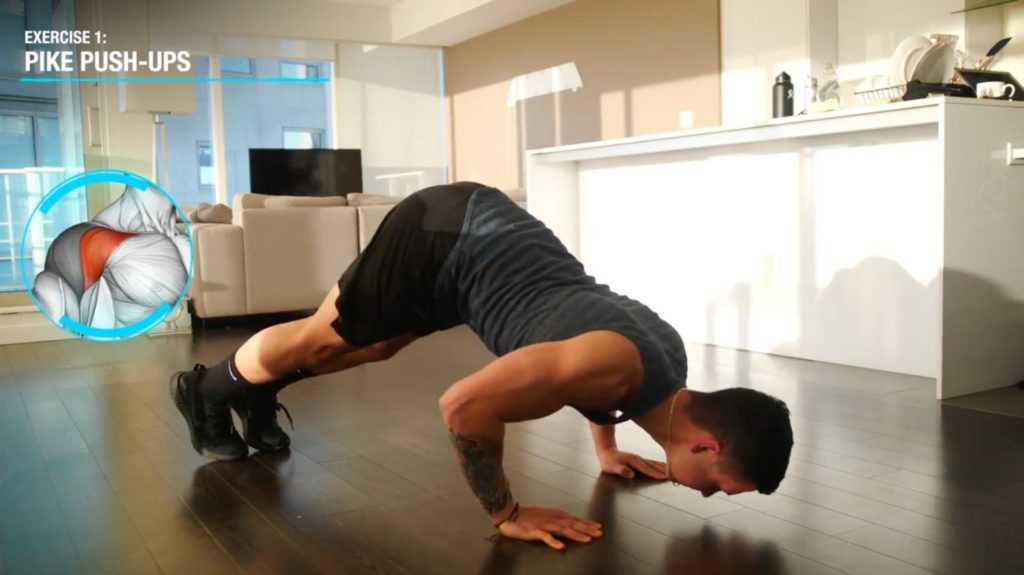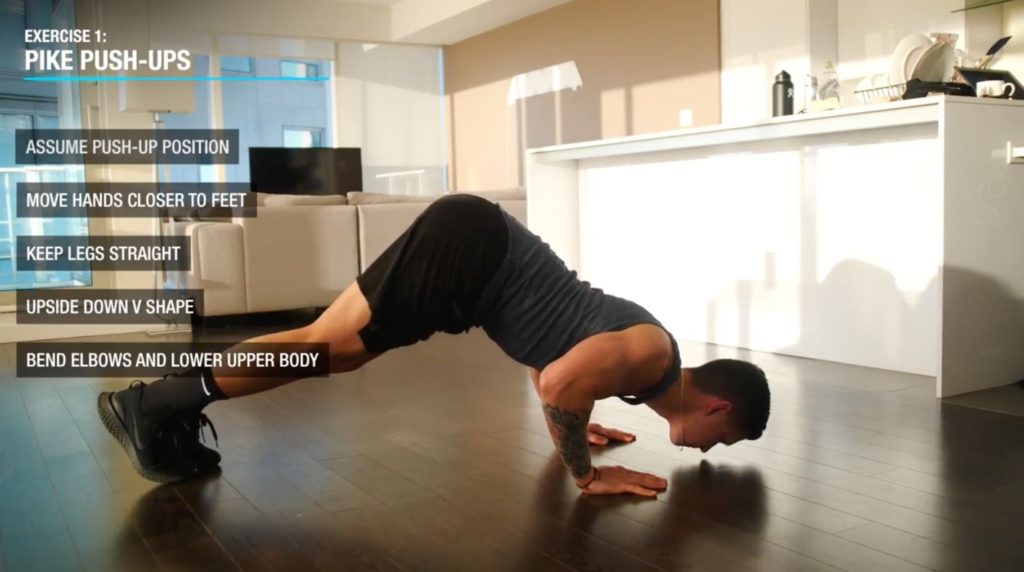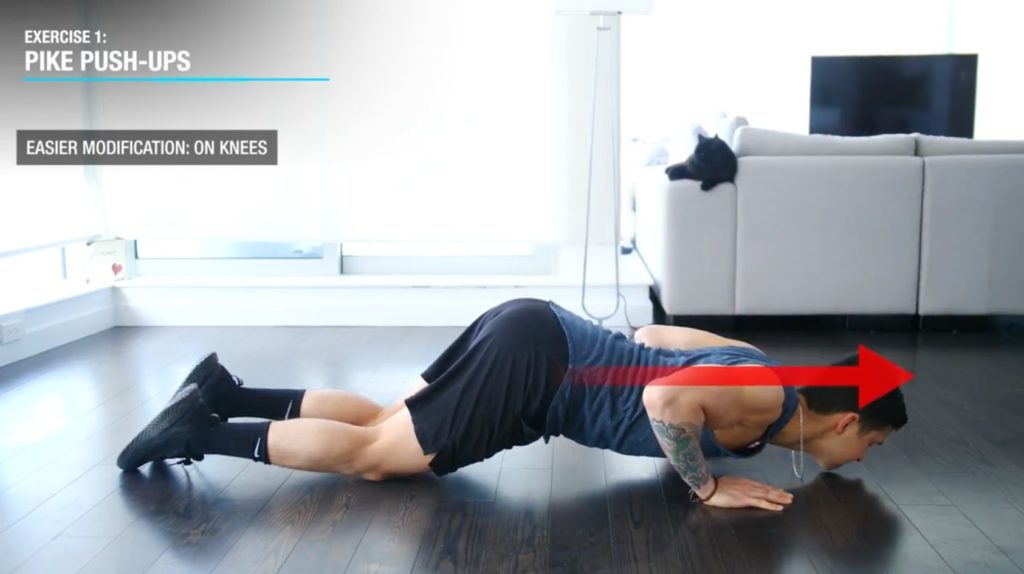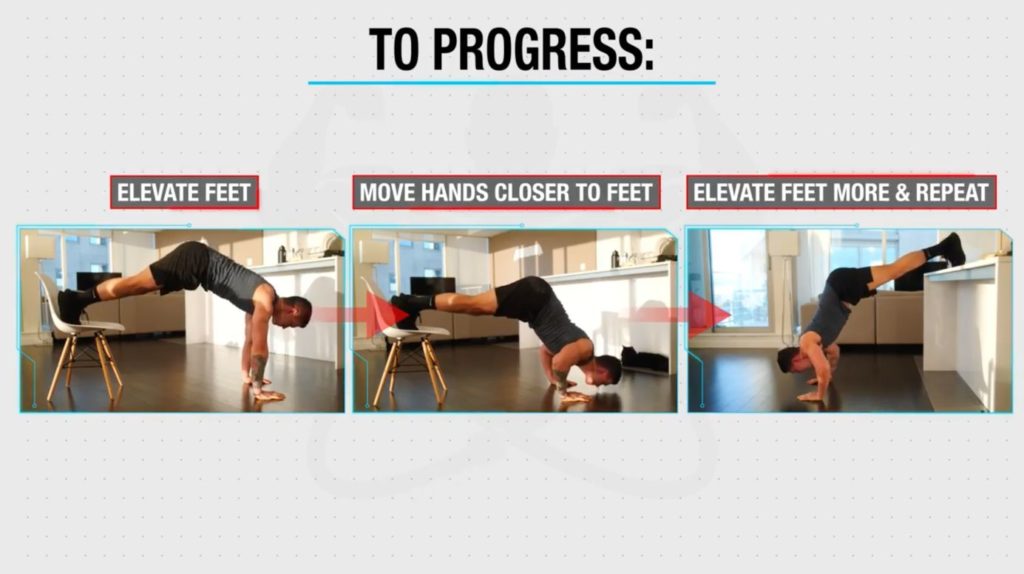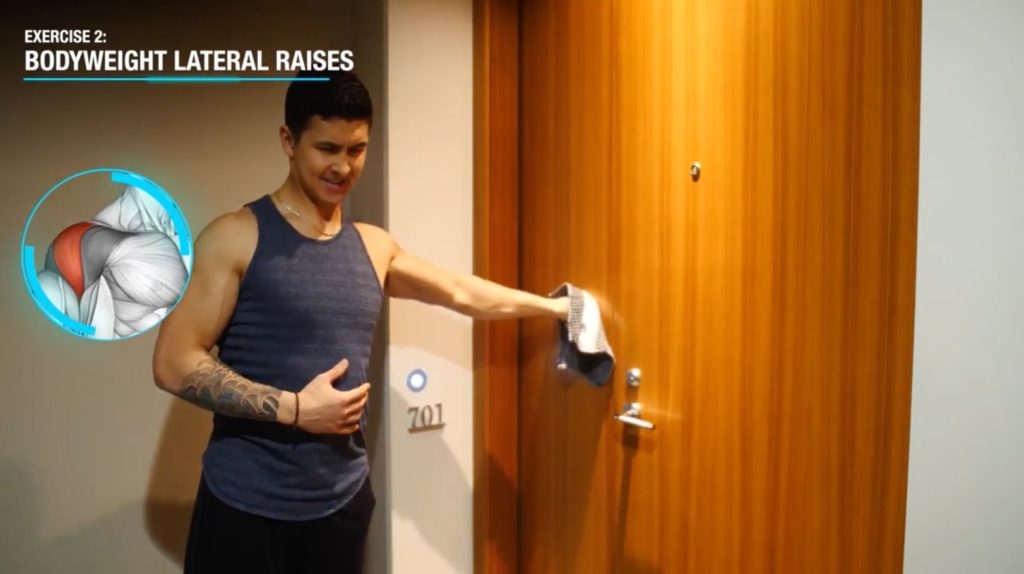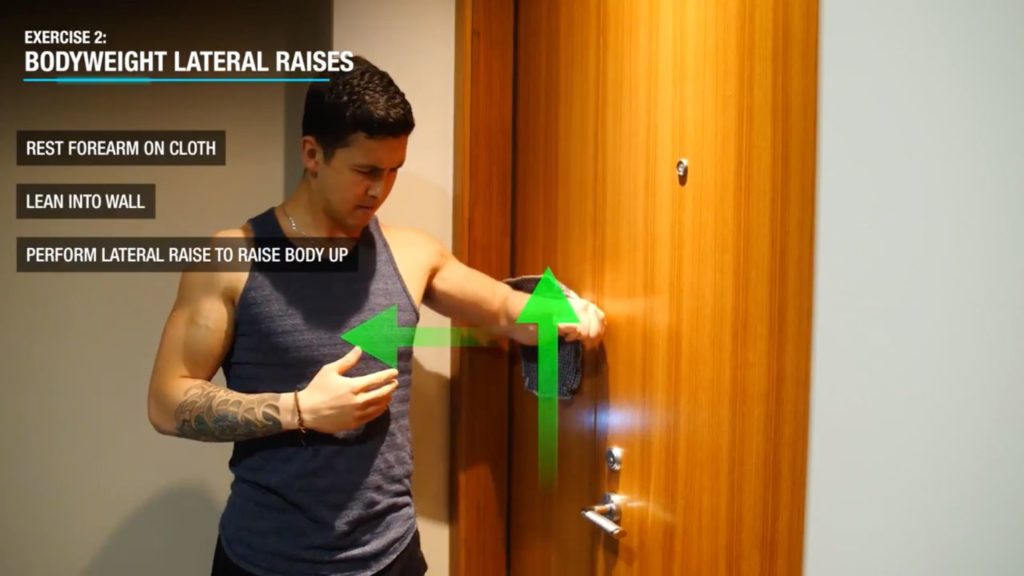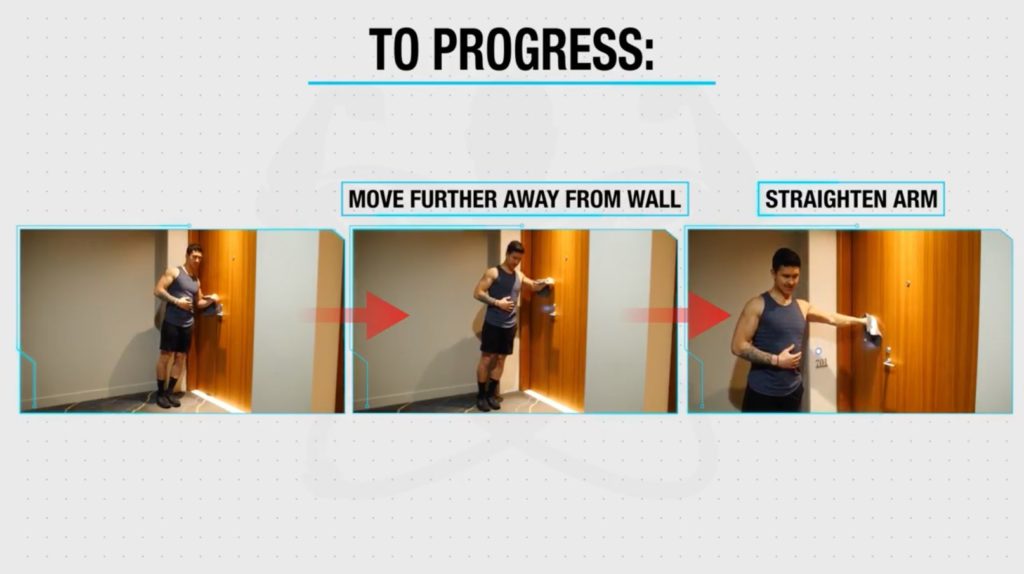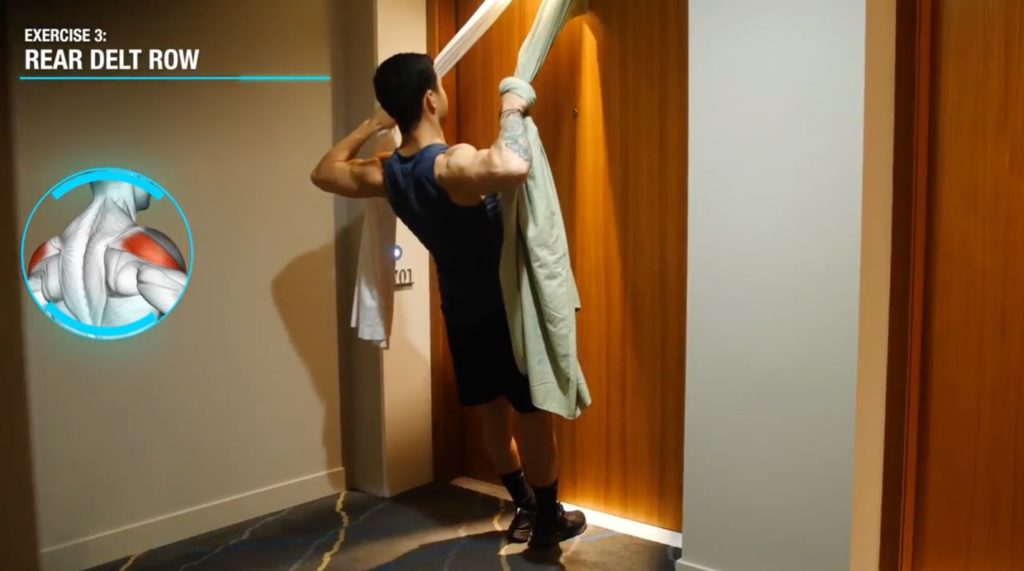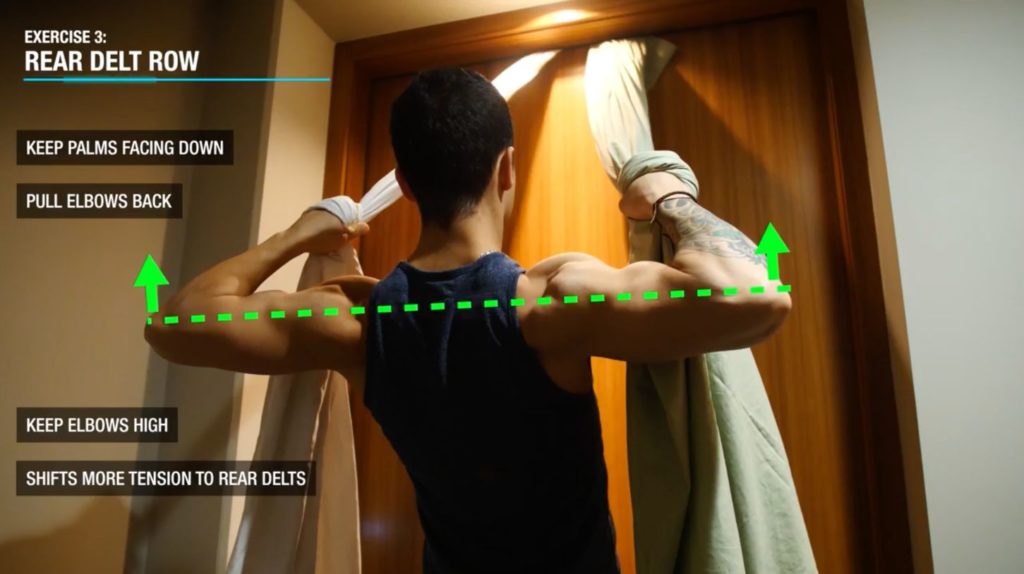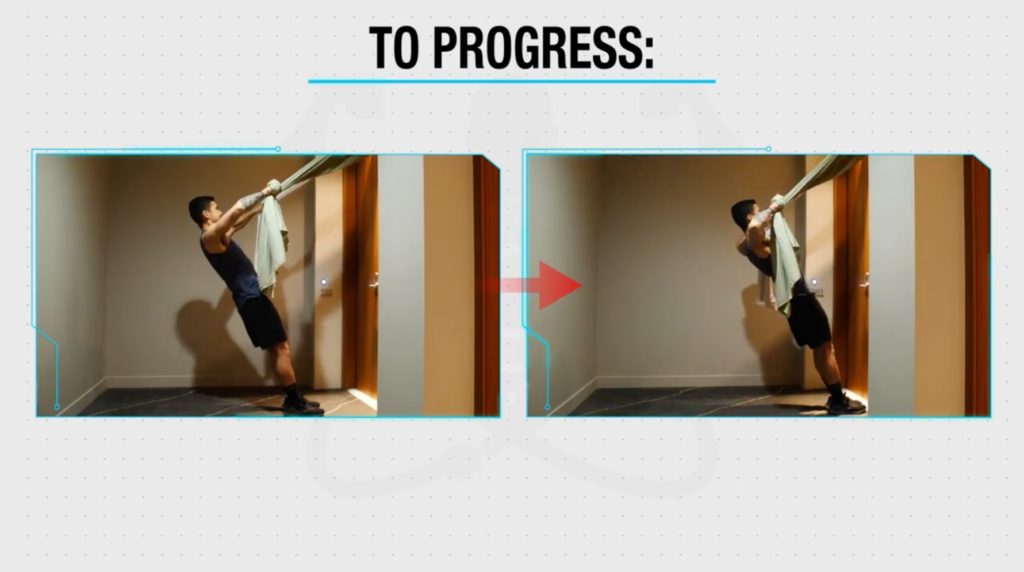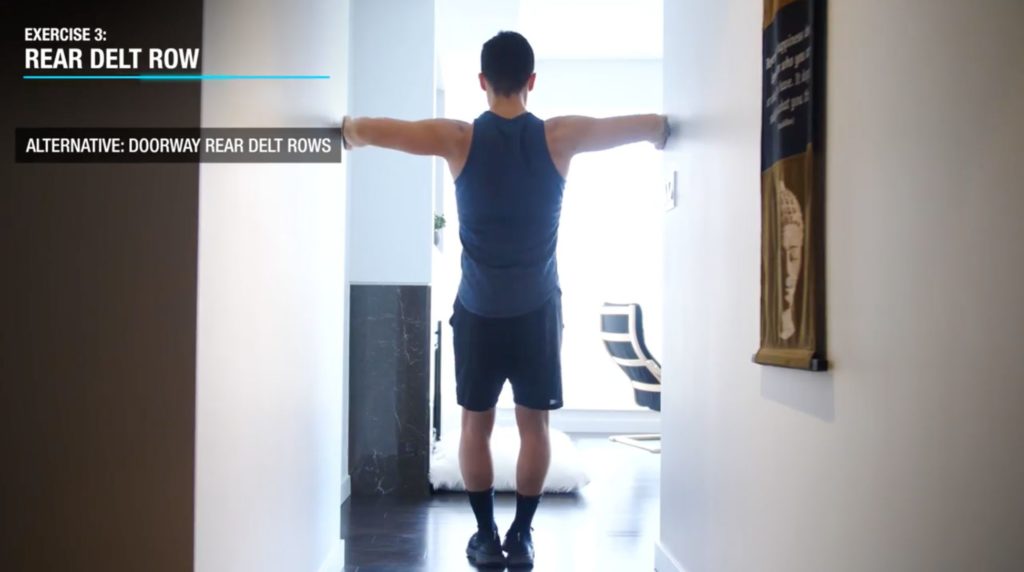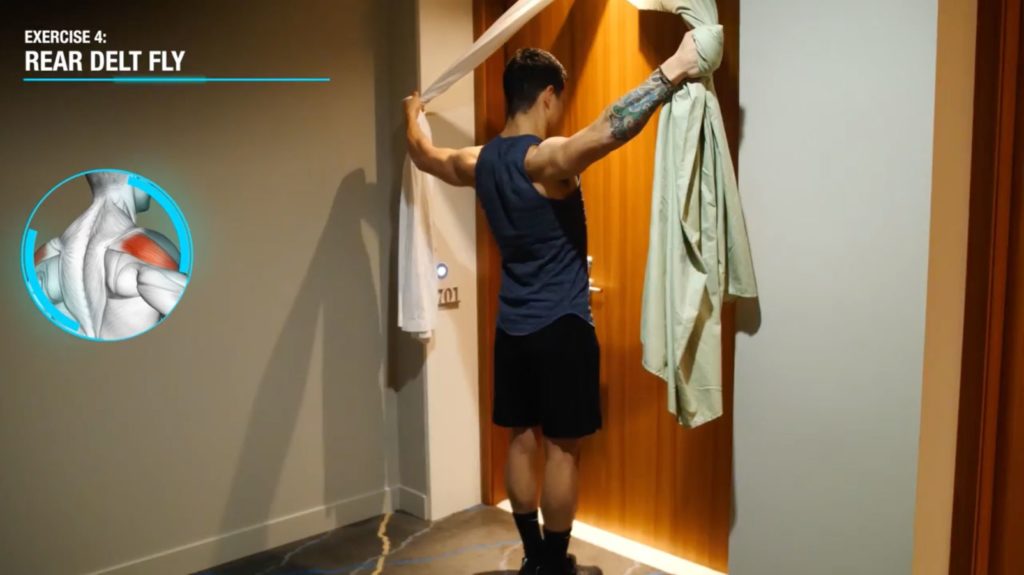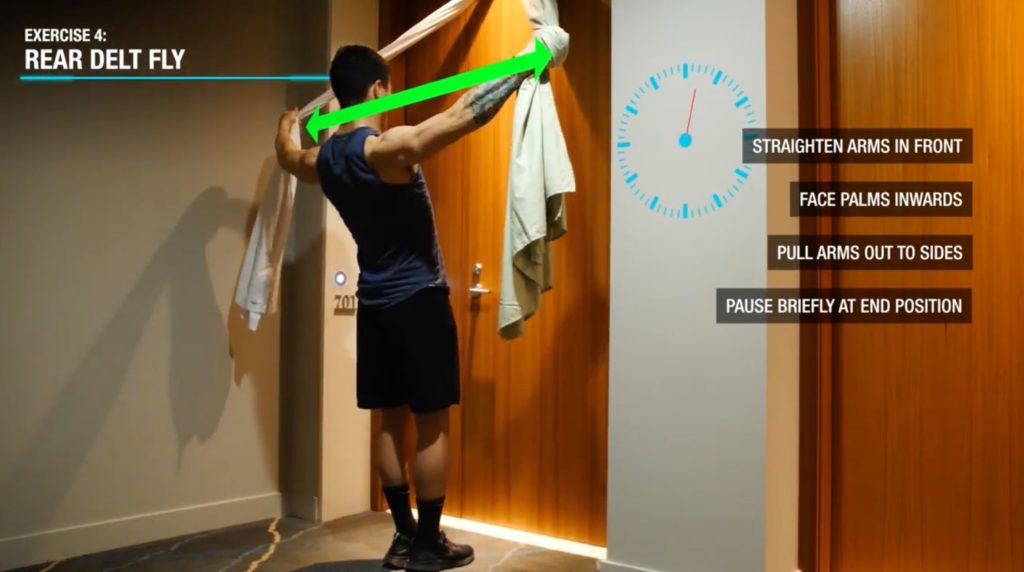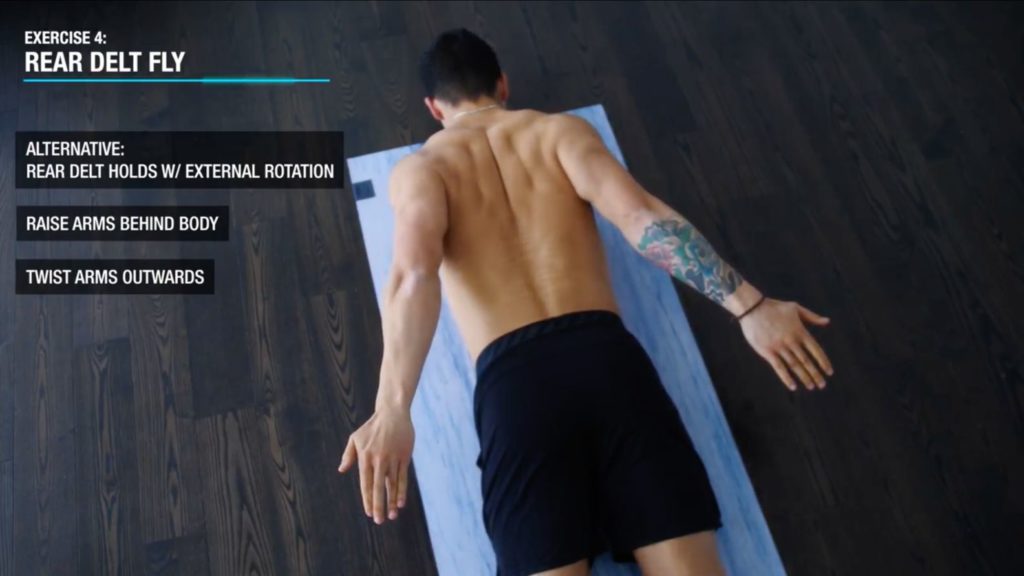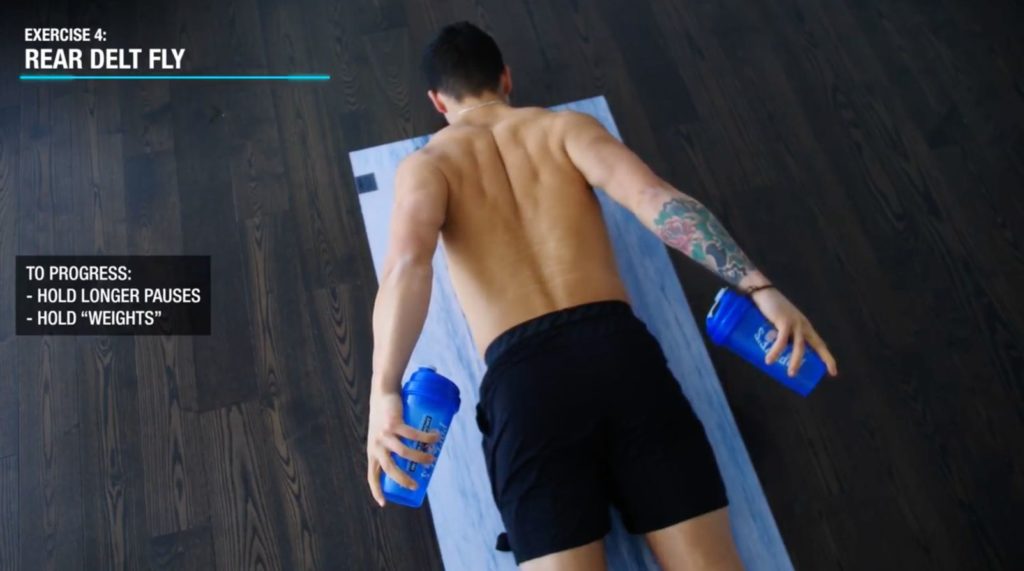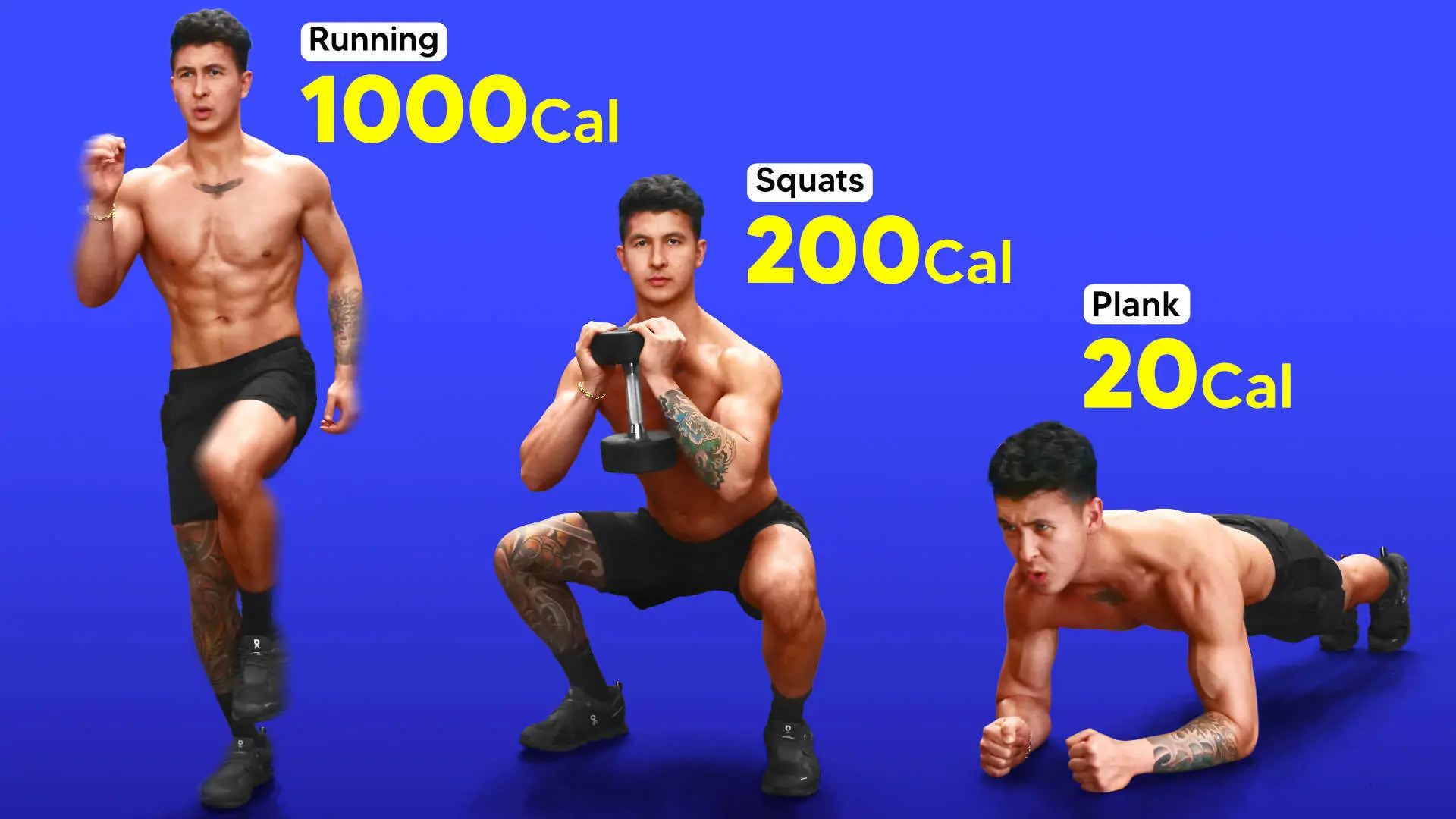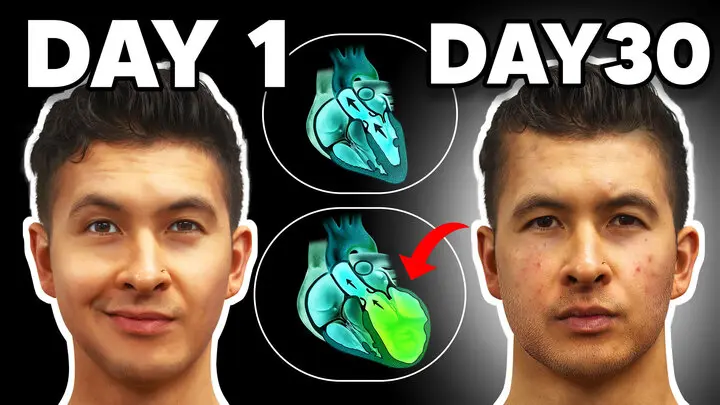The BEST Shoulder Workout At Home For Growth (NO EQUIPMENT)
You can build bigger, wider, and more powerful-looking shoulders without equipment! In this article, I'll show you the best shoulder workout at home you can do to achieve exactly that.
To build big shoulders, you need to focus on hitting all of the three heads that make up this muscle group in your shoulder workout at home. Because adequately targeting and growing the front, middle, AND the often neglected rear delts really is key. This is especially when it comes to creating that 3-dimensional, rounded look with your shoulders. Of course, doing so is easy when we have access to heavy weights and gym equipment. But this now becomes much more difficult to do at home without any equipment to rely on.
That said, by simply knowing what each head is responsible for doing, we can determine what bodyweight shoulder exercises can be used to effectively train each of these heads without the use of heavy weights. And in this workout, I’ll show you:
- What these exercises are, AND
- How to properly progress each of them. This allows you to continue growing your shoulders over time as you get stronger.
Without saying, this can all be done in the comfort of your own home.
Before that: if you're looking for a training program that'll help you set up every single one of your home workouts for optimal muscle growth (not just for the shoulders, but for ALL muscle groups!), I've got just the thing for you. Every BWS program is designed to be an all-in-one, science-based process that’ll get you to your dream physique FAST. And best of all? It's all rooted in science. For more information:
Click the button below to take my analysis quiz to discover the best program for you:
↓
Exercise 1: Pike Push-Ups
The first exercise we’ll use in our shoulder workout at home is the pike-pushups. This exercise mainly targets the front portion of your shoulders. As you may know, front delts are responsible for moving your arms forward and pressing them overhead. And as you can see here, this exercise can effectively replace the heavy overhead shoulder pressing movement we’d typically perform in the gym to target this portion of your shoulder. That's because of the similar mechanics of both exercises.
How To Perform Pike Push-Ups
To perform them:
- Start out in a push-up position
- Move your hands closer to your feet while keeping your legs straight until your body makes an upside-down V shape
- Then, simply bend your elbows and lower your upper body until the top of your nose nearly touches the floor
- And press up using your shoulders to return your hands back to the top position
And as you do so, keep those elbows tucked rather than flared out. Why? Well, because this will not only shift more tension to your shoulders but will also be a safer position for your shoulder joint.
Now if these are too hard, you can start out by performing these on your knees instead. Where you again lower your upper body forward until your nose nearly touches the floor in front of your hands. Then, press backward in the opposite direction back to the start position.
Then, you’ll want to progress to the standard version.
To progress it even further from there, you can first elevate your feet up to the edge of a platform. And perform your reps on that. Then over time, gradually move your hands closer to your feet to make the movement even more difficult. And once you’re able to do so, progress it once again by elevating your feet onto an even higher platform.
Keep repeating this process. This way, you’ll still be able to continuously overload the movement and grow your shoulders with just your bodyweight. Even without access to heavy weights,
Exercise 2: Bodyweight Lateral Raises
Next up in our shoulder workout at home is lateral raises. We’re going to use this exercise to now target the side portion of your shoulders, which helps give it that added width. This head of the delt is mainly responsible for shoulder abduction or, in other words, raising your arm out to the side. But given that we don’t have weights to perform traditional lateral raises, we can compromise by using our bodyweight instead.
Here, you’ll want to:
- Lay your forearm against cloth or towel placed on a smooth wall or the edge of a door frame
- Take a small step to the side of the wall, and then lean your body against it
- Slide your forearm up mimicking a side lateral raise in order to raise your body back up by using your side delt
- Let your body drop back down while sliding your forearms back to the starting position
- And then repeat
To make these easier, you can stand closer to the wall and use less of a lean. Then, over time as you get stronger, you’ll want to gradually move further away from the wall. And lean your body to a greater degree. Doing so means that your side delts are now lifting a higher proportion of your bodyweight. You can also lengthen the lever to increase the difficulty as well by straightening your arm and performing the lateral raise like so.
Exercise 3: Rear Delt Row
Next, it’s time to shift our emphasis onto the rear delts. This muscle group functions to help pull the arm back behind the body. And gives our shoulders that rounded, 3D look we’re after. Yet, are unfortunately quite a difficult muscle to train at home. We’ll effectively do so in this workout, however, by performing a rear delt row by using the bed sheet setup that I’ve shown in my other home workout articles (full-body, chest, back).
To perform these:
- Wrap the sheets around your hands, take a few steps away from the door, and lean back until there’s tension in the sheets
- With your palms facing downwards, perform a row by pulling your elbows back as far as possible to raise your body up
- And then control your body back down until your arms are straight
- Repeat
However, as you row you want to keep your elbows up high at shoulder height. Doing this helps biomechanically minimize the involvement of the lats. And instead, shift more of the tension onto the rear delts. You can start with your feet further away from the door. And then gradually move your feet closer to the door to make the movement more difficult over time.
What if you're not using the bed sheet set up? Then an alternative is to perform the same rowing movement but in between the end of a hallway or doorway. Here, you can just grab onto the edges of the walls or doorframe. And you want to pull using the same rowing motion. Again, keeping those elbows high. To make these more difficult over time, simply move your feet forward more to get your body more horizontal to the ground.
Knowing how to tweak/replace exercises that suit your training goals is pretty complicated - especially when you have limited access to equipment. Thankfully, though, the team here at BWS has the necessary expertise to do just that. Our 3-on-1 coaching program takes the guesswork out of training, nutrition, and even mobility work - so you can focus on what matters: making gains. If you're interested:
Click the button below to find out more about the 3-on-1 coaching program:
↓
Exercise 4: Rear Delt Fly
Lastly, we’ll finish off the workout with a little more rear delt isolation. And we'll achieve this by using the rear delt fly.
Here, you want to again use the bed sheet setup. But this time you’ll straighten your arms in front of you with your palms inwards towards each other. Then:
- Raise your body up by pulling your arms out to your sides
- Hold the end position for a second or two to intensify the contraction of the rear delts
- And then return to the start position
- Repeat
By keeping your hands facing inwards throughout the movement, it incorporates slightly more external rotation into the exercise. We want to do so because research has shown that this helps boost the activation of the rear delts.
Why? Well, because that's one of its main movement functions, and is something that our previous rear delt exercise was missing. To progress this over time, simply bring your feet closer to the door just as we did in the last exercise.
Now if you don’t have access to bed sheets for this, a viable alternative is rear delt holds with external rotation:
- Lay down on your stomach
- And then simply raise your arms back behind your body while twisting your arms outwards such that your thumbs face towards the ceiling at the end position
- Hold this for a few seconds before coming down and then performing another rep
This does effectively incorporate the various movement functions of the rear delts. But obviously becomes problematic to overload with weight as you get stronger. I’d suggest using a combination of holding that end position for longer and adding additional load by holding onto water bottles, for example.
Shoulder Workout At Home: Action Plan
So to sum the video up, here’s what your home shoulder workout could look like:
Pike Push-Ups: 4 sets
Bodyweight Lateral Raises: 4 sets
Rear Delt Row (Sheets OR Doorway): 3 sets
Rear Delt Fly (Sheets OR Lying Holds): 3 sets
This CAN be performed all in one as a shoulder workout. But I’d recommend instead splitting the exercises up into at least 2 days throughout the week using an upper/lower split, for example. This allows you to better manage the training volume and frequency.
As for reps, ideally, you want to use a rep range of roughly 10-15 reps per set. But worry less about the rep range and instead focus on taking each set of the workout either to failure or within a rep or two short of failure in order to maximize growth despite having access to heavy weights. And then, once you can perform more than roughly 30 reps per set in any of the exercises, you want to then progress to a harder variation that I provided for each movement. This allows you to continue maximizing growth over time.
Takeaway
But by executing and progressing these shoulder-building exercises at home properly over time as you get stronger, you’ll be able to build your shoulders in the comfort of your own home without the need for heavy weights. Just keep in mind though that that’s just one piece of the puzzle. Because pairing your workouts with the right nutrition plan is essential when it comes to seeing results and packing on size.
And for a step-by-step science-based program that takes care of all the guesswork for you by showing you both how to workout AND what to eat week after week in order to build muscle as efficiently as possible with science, then:
Click the button below to take my analysis quiz to discover the best program for you:
↓
Alright, that's all I have for now. Hope you now know how to build big shoulders at home! Don’t forget to give me a follow and connect with me on Instagram, Facebook, and Youtube as well, in order to stay up to date with my content. Instagram, especially, as that’s where I post these workouts in a condensed version that you can easily follow along to! Thanks a bunch, everyone and I’ll see ya next time!



